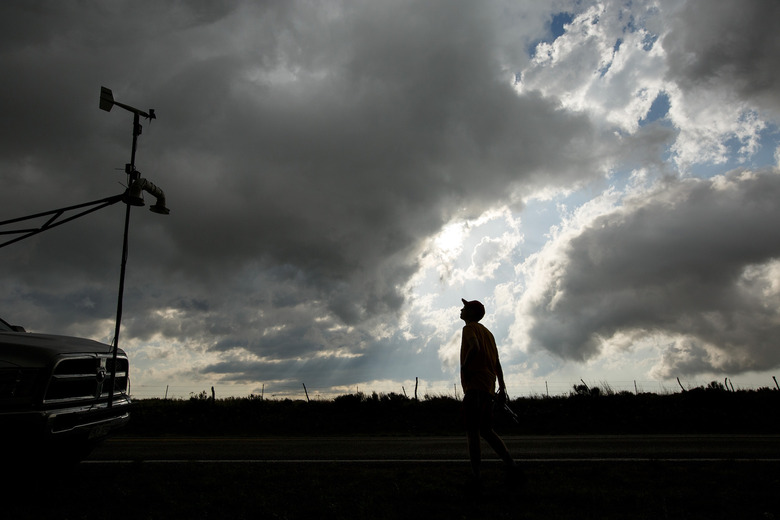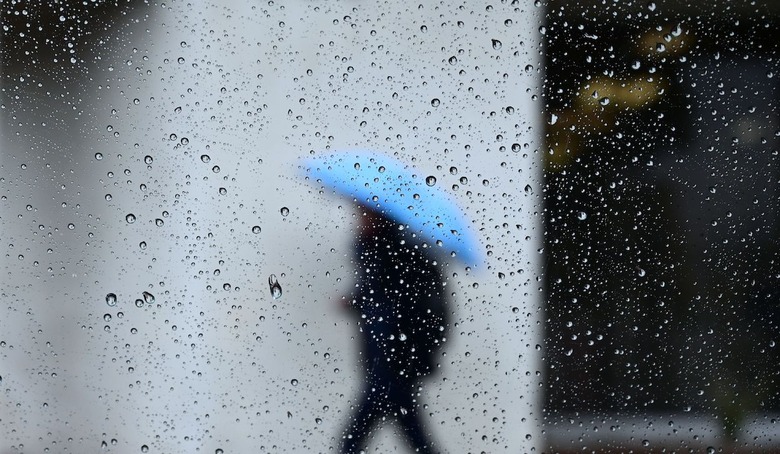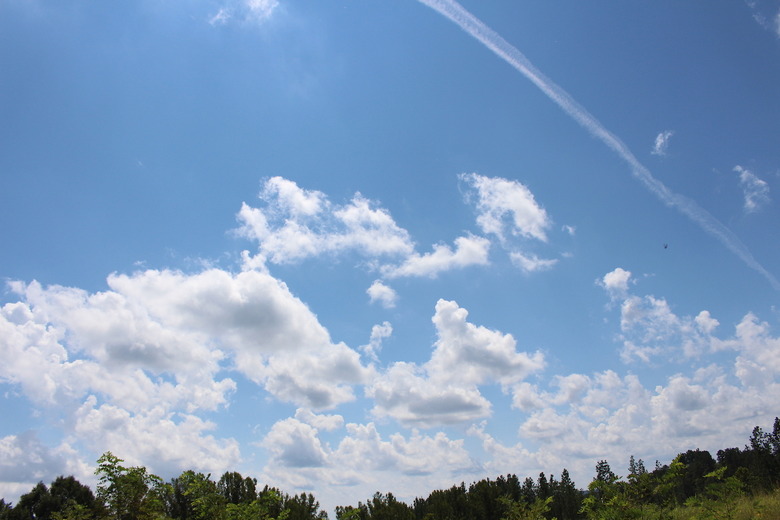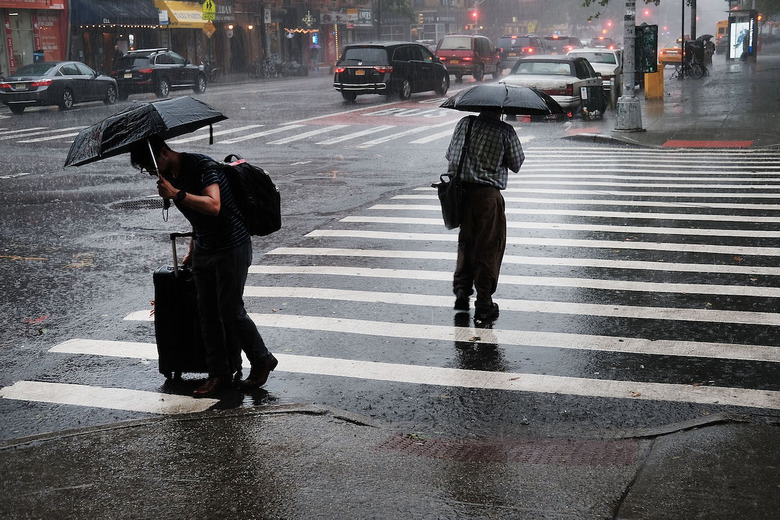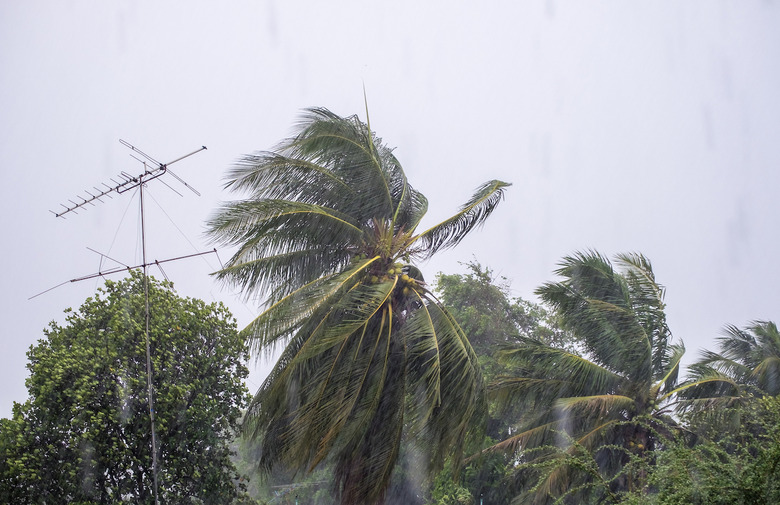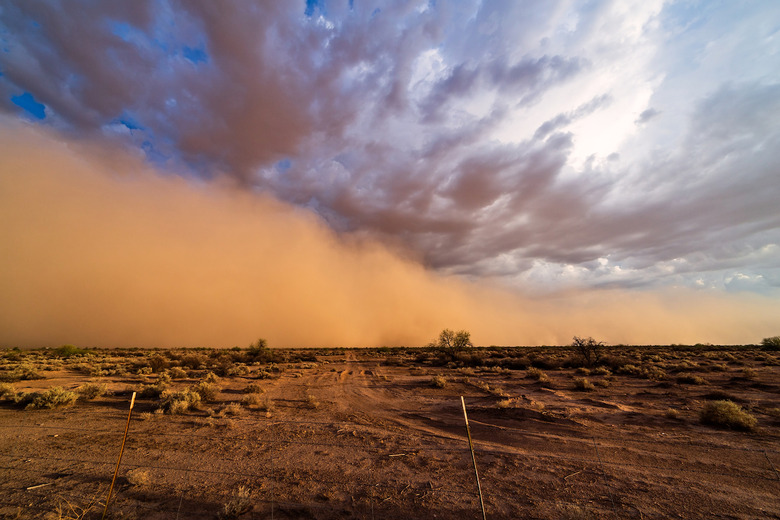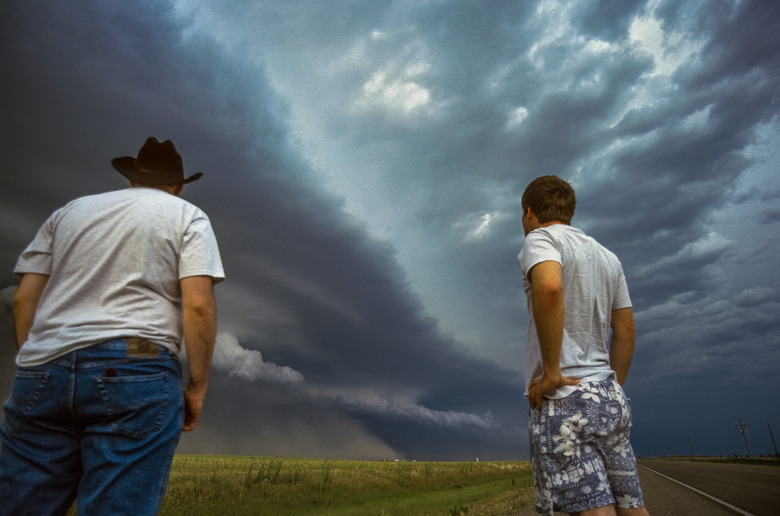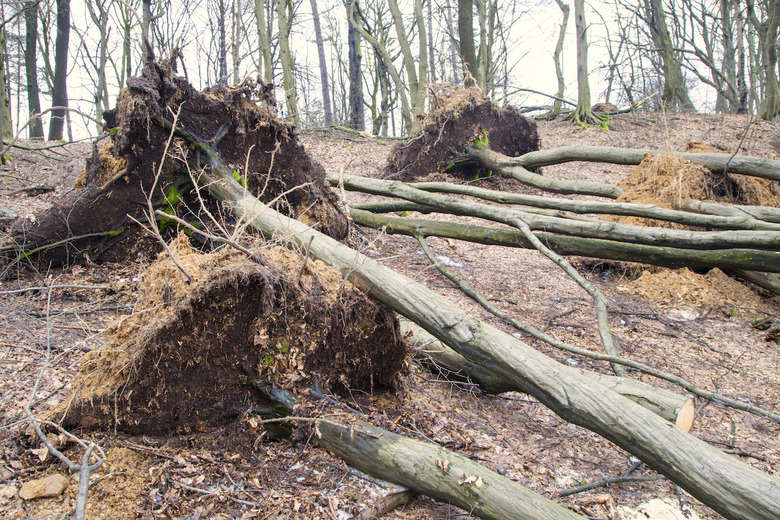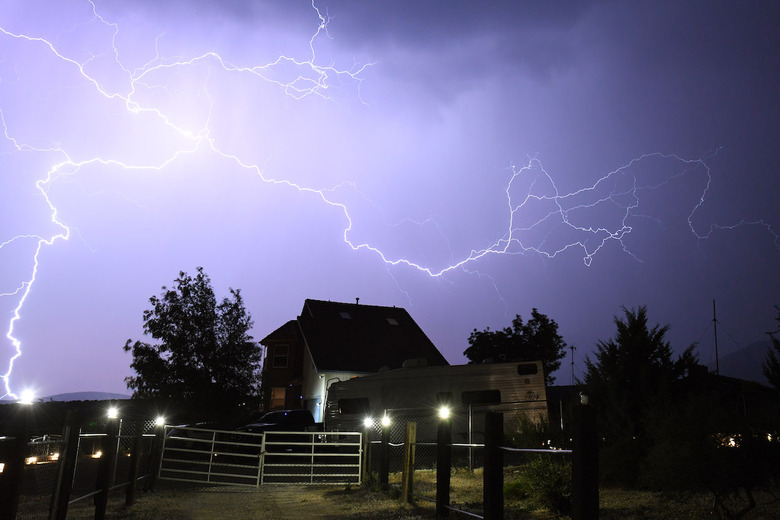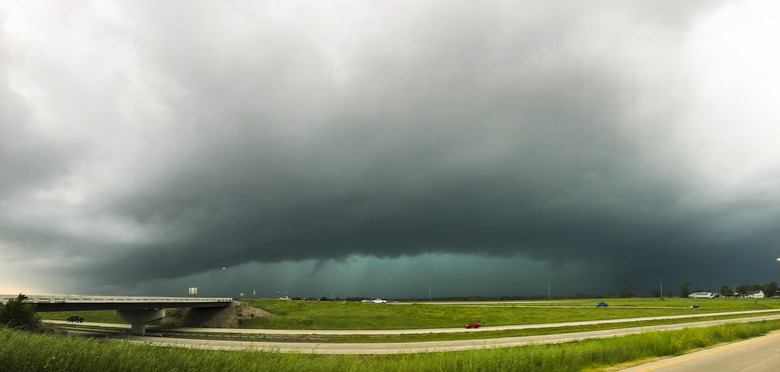Weather Events That Can Only Happen In The Spring
There are a lot of fun and breezy ways to spend the first day of spring. Unfortunately, breathing a sigh of relief over how the worst of extreme weather is behind us isn't one. Frigid temperatures during the winter months result in extremely wild cold weather phenomenons. However, spring is unpredictable. Temperatures change drastically day-to-day or hour-to-hour. As the atmosphere warms following a cool winter, conditions may be rainy, windy, stormy, cloudy or sunny. The Weather Channel calls meteorological spring, the season from March 1 to May 31, the most dynamic time for weather. Here's just a sampling of extreme weather events that peak or occur only during the spring.
Wild temperature swings
Spring temperatures are, well, temperamental. During the earlier months of March and April, strong low-pressure systems move across the country's center and most eastern states. The systems push warm air and deceptively hot weather into the northern U.S. Eventually, the temperatures drop, so take advantage of an uncharacteristically warm weekend and schedule a spring day trip.
Jet stream
Ever seen an inexplicable ribbon of suspended air, like the trail of a middle-of-day rocket launch, spread across the bright and blue spring sky? That's jet stream, a streak of high wind speeds some 6 miles above the Earth's surface. They move 110 mph and form when warm air masses meet cold ones. The jet stream's flow migrates south to north during spring, reaching the U.S./Canada border by summer. However, the resulting strong winds blow west to east, wrecking thunderstorm havoc. Meteorologists use these natural sky shows to predict the weather, something you can do from your home too.
Thunderstorms
Thunderstorms form when warm air rises to meet cold air. The cold air cools the warm air, forming water vapor. The vapor lowers in the atmosphere, warms, then rises back up again to form a convection cell and storm cloud. Springtime contains all the perfect ingredients for a thunderstorm, chief among them unstable air and weather conditions. For their part, thunderstorms are the genesis of most extreme spring weather. Much of what is to come on this list begins with a bad thunderstorm. To be safe, follow the rules of the road when driving in a storm and slow down.
Extreme winds
March is among the windiest months of the year for most of America. Sea-level pressure differences across small distances and strong storms drive gusty winds. In the South, extreme winds pick up dust along the way, contributing to another spring weather extreme.
Dust storms
Sometimes feet or miles high, dust storms are walls of dust and debris blown and collected in a thunderstorm's wake. Stateside, dust storms are known to peak during springtime in the Southwest. The region is prime for them. Flat with sparse trees and greenery, the Southwest has become even drier and more dust storm-prone over the past couple of decades.
Spring thaw
As spring teases summer weather, winter's snow melts away. The result? Quick and unexpected runoff. One cubic foot of snow contains gallons of water. During the early days of spring, the still-frozen land cannot absorb the quickly melting ice. The water makes its way to lakes, rivers and other larger bodies of water, where it cannot be contained. Water spills over the banks. Add in a heavy downpouring rainstorm and flash flooding is unavoidable.
Squall line
When a group of individual storms line up, they are referred to collectively as a squall line. Most common during springtime in U.S. regions east of the Rockies, these storms can span 100 miles but typically reach 10 to 20 across. Tucked within a squall line you will find a bow echo — an arched or bowed-out line of thunderstorms. Though less likely to produce a tornado than other thunderstorms, the winds induced by bow-echo storms account for large swaths of structural damage resulting from non-tornadic winds. Prepare for a storm and up your home's retail value by securing or replacing your roof.
Derecho
Seventy percent of rare but long-lasting wind storms known as derechos occur from the late spring months of May and June to July. In short, derechos are destructive. Just to be counted as a derecho, wind gusts must whip at speeds over 58 mph and extend 250 miles. Still, some meteorologists debate the makings of a true derecho, and count at least three instances of damage induced by 75 mph or higher winds as a prerequisite.
Extreme lightening
The most photogenic of crazy weather, lightning comes in many variations. Intra-cloud lightning, the most common type, happens completely inside the cloud. You can spot this type by how it lights up the whole cloud sheet. Other self-explanatory sorts of lightning include cloud to cloud, cloud to ground and cloud to air. Still, there are a couple of other classes of lightning to safely look out for this spring. First, spider lightning runs horizontally like a spider's legs or web. Heat lightning goes unheard. "Bolt from the blue" lightning also travels for miles horizontally within a cloud until it strikes the ground. And anvil lightning travels from the top of a cloud straight down to the ground.
Tornadoes
About 1,200 tornadoes hit the U.S. each year. For the southern Plains, May to June means peak season. For the Gulf Coast, Midwest and northern Plains, peak season is during June and July. Simply put, tornadoes are rotating funnels made from already-rotating thunderstorms known as supercells. Widely known for their destruction, many tornadoes are counted among the most devastating natural disaster in each state.
More From The Active Times
45 Extreme Weather Conditions Pro Athletes Have Endured
The Best Free, Family-Friendly Spring Break Attractions in America
The Best Spring Vacations in America
Where To See Beautiful Cherry Blossoms Around The World
Weather Makes You Sick, and Other Cold and Flu Myths Debunked
